Black locust is a wood of high intrinsic value. Gabor Erdélyi of Robinia Group calls it a triple threat: Economic, Ecological, and Functional. Zach Rike of Robi Decking draws a parallel to Tesla. Today we’ll dive into two businesses whose core product is black locust. How did they get started? How do they market their products? What are consumers looking for?
Marketing and branding are how we signal – how we create a first impression. These touchpoints often come before we can build personal relationships. The cynic would say that marketing is the art of sculpting perception. The optimist might view it as the process of connecting with folks that would benefit from our goods and services. Agroforestry goods often put us in the second camp: connection and candor. These responsibly-produced forest products present us with the unique opportunity to be fully transparent – and both companies we’ll look at today exude transparency, fairness, and sustainability.
Black locust is a fast-growing hardwood, native to temperate North America. It thrives from Georgia, west to Oklahoma, and north to Minneapolis and Montreal. Robinia pseudoacacia is unique in that it is extremely rot-resistant: the heartwood xylem is filled with tyloses, which greatly restrict the passage of water through the wood. Historically, farmers have used locust for fence posts. These days, Robi Decking and Robinia Group are marketing decking, pavers, boardwalks, and playgrounds to discerning customers.
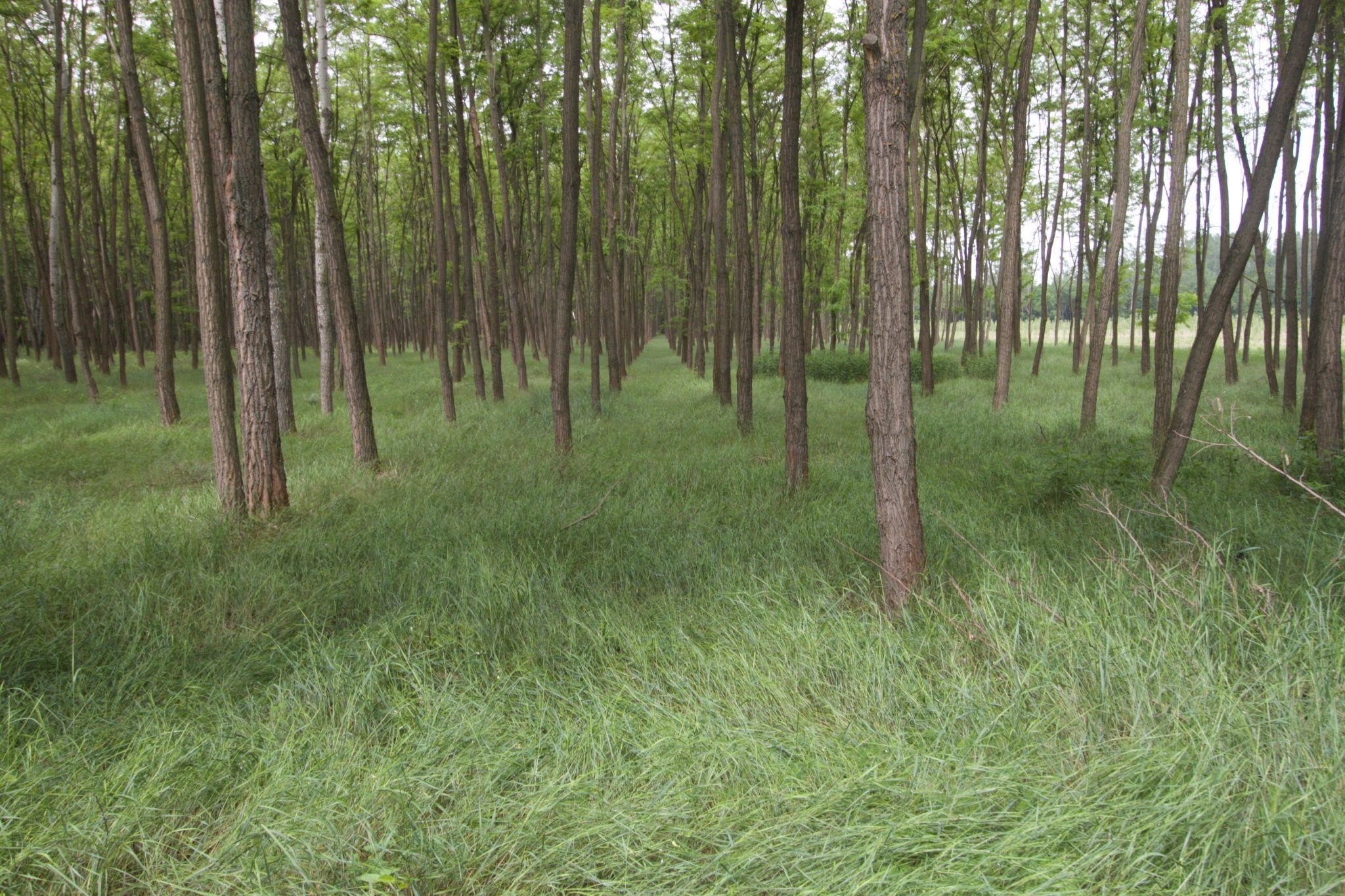 Figure 1. Form-pruned locust, rural Hungary.
Figure 1. Form-pruned locust, rural Hungary.
Black Locust in the United States
Robi Decking is the United States’ premier supplier of black locust lumber. Zach Rike founded the business in 2014 to satisfy the demand for high-quality hardwood decking. Coming from a family in the demolition business, Zach saw firsthand that many of our building materials are not designed to last. Here emerged the business opportunity: decking that will last for our grandkids to enjoy. Treated pine decking is excellent for creating repeat-customers, both for maintenance and replacement. Black locust is the Mercedes Diesel of decking – with Tesla and their million-mile battery being the modern analogue. Robi has grown exponentially, with the value proposition of: durable outdoor wood products that are not just made to stand the test of time, but are inherently sustainable.
Why is it sustainable? Growing black locust leaves a landscape better than we found it. The tree is a fast-growing pioneer species: it colonizes degraded or abandoned landscapes. Around year 50, the tree topples over after rotting from the inside out, opening up the canopy for late-successional species such as oaks. About 25% of a locust’s biomass is in its roots, meaning that harvesting the trunk for lumber still leaves a net gain in biomass and carbon. This is in contrast to slow-growing, rare rainforest species, such as ipê, that are often used for decking.
Robi actively promotes the planting of new locust stands. Demand is consistent, and spurred by word of mouth: from homeowners, to contractors, and back again. Agroforestry is defined as the intentional incorporation of tree crops and farmland. Not only is locust an elite product, but the why of the company is inspiring. Agroforestry products are unique in that they align with what we’re craving: sustainability, uniqueness, and beauty. Fortunately, black locust cultivation has a precedent: in a country with over a century of locust plantation forestry.
Outside of the United States, Hungary is the world’s cultural center of black locust. Hungary is unique in its language (no others are related), its geography, and its cultivation of black locust. After World War I, Hungary’s borders contracted, causing the nation to lose 80% of its forest. To fulfill its wood needs, Hungary now grows poplar and locust in plantation. Europe is relatively wood-scarce. Austria and the Nordics grow pines and Croatia grows oaks – and Hungary’s competitive advantage, in their sandy soils, is Robinia pseudoacaia. They call locust white acacia, or “fehér akác” (pronounced “feh-hear awkatz”). The tree was brought to Hungary from North America in the 1700s, and was loved by Maria Theresa, then ruler of The Hamburg Empire.
Locust cultivation persists due to the tree’s usefulness and its growth rate. Woods of different colors go in and out of style: walnut, beech, and cherry. Mr. Gabor Erdélyi tells us that “Locust is not fashionable. It is a function-based value proposition, so it doesn’t go out of style.” Mr. Erdélyi is founder and president of Robinia Group – and also the winner of Hungarian Entrepreneur of the Month, and Man of the Year, from the Hungarian Society of Wood Science.
Robinia Group Kft. now posts annual sales of 2.5 million euros (3 million US dollars), and employs 50 people. The company specializes in finger-jointed lumber and sapwood-free posts, all of which is used for outdoor wooden infrastructure such as boardwalks, decking, and playgrounds. The quality of their product speaks for itself, and Gabor tells us, “Our slogan is ‘Fair Solutions’ because ‘Best Solutions’ is a lie. We have a candid brand.”
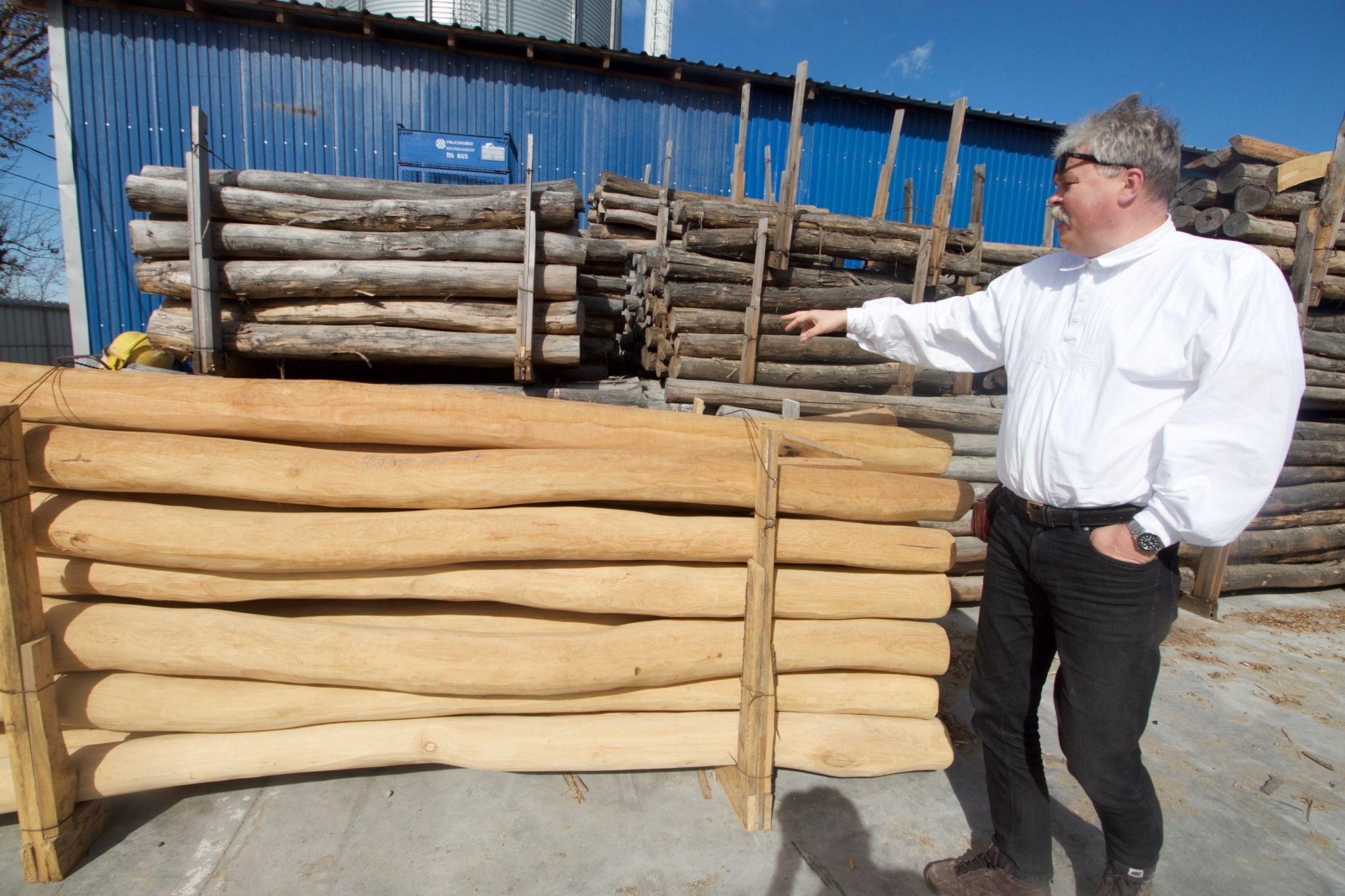 Figure 2. Mr. Erdélyi is a charismatic, enterprising man who exudes innovation. He tells us that black locust employs 60k people in Hungary: 30k in wood, and another 30k in honey.
Figure 2. Mr. Erdélyi is a charismatic, enterprising man who exudes innovation. He tells us that black locust employs 60k people in Hungary: 30k in wood, and another 30k in honey.
Locust weathers both time and market changes. Robinia Group was founded in 1995 as a general wood trading business, in post-communism Hungary and during a time of market anarchy. At that time, wood products were diverse and unorthodox: custom joiners and carpenters were common, due to society’s new ability to have more than 4 types of house and 2 types of kitchen. Black locust presents a unique combination of intrinsic value (durability), and a thorough point of differentiation: it is the cold-climate tree species with the highest rate of carbon sequestration.
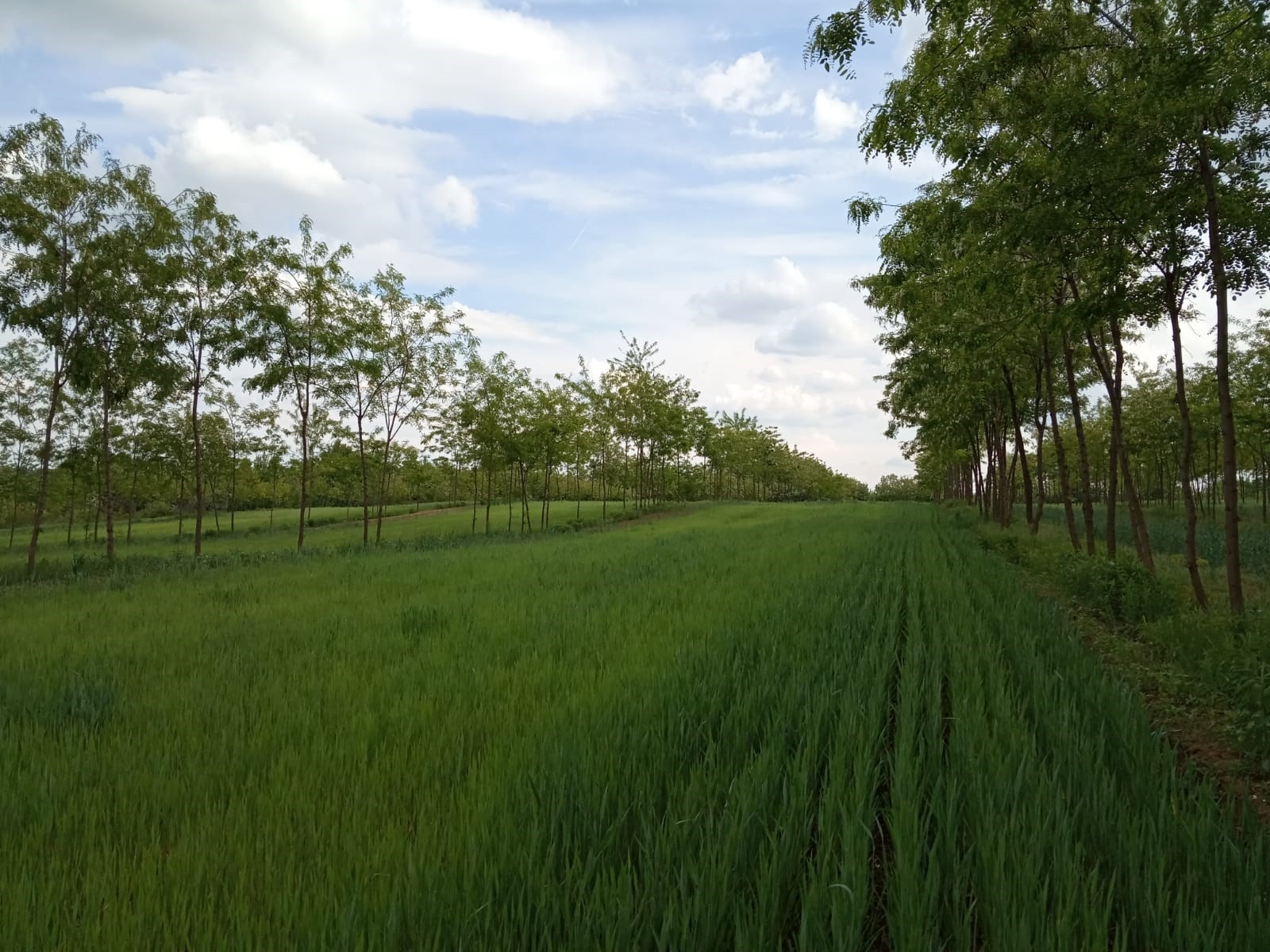 Figure 3. Locust-triticale alley cropping, Gödöllo, Hungary. Combining trees with an agricultural understory takes advantage of the vertical space on a farm, and is roughly 140% as productive as growing the two in separation. Photo via Veronica Honfy, ERTI.
Figure 3. Locust-triticale alley cropping, Gödöllo, Hungary. Combining trees with an agricultural understory takes advantage of the vertical space on a farm, and is roughly 140% as productive as growing the two in separation. Photo via Veronica Honfy, ERTI.
Gabor highlights that using locust lumber is ecologically responsible. He cites that certain consumers are refusing ipê, just as they refuse fur coats: “Society changes its attitude, and there is now a collective conscience around our ecological footprint.” Ipê is a rare rainforest hardwood. It grows in low densities, and additional forest must often be cleared to reach a desirable tree. Ipê is not only ecologically degenerative, but often logged illegally and tied to organized crime. Both Robi and Robinia Group cite these detriments, though both companies stress focusing on what we do want our wood products to be like.
“Sell lumber, not firewood.” Hungarian winters are cold and dark: Budapest is at 47 degrees north latitude (Duluth or Bismark), and winter temperatures drop to 10 degrees fahrenheit. Half of the locust grown in Hungary is used as firewood. Robinia Group sells firewood, and also uses their residual biomass to heat their kiln. Because Hungary is wood-scarce, harvesting and selling firewood provides a higher return on a land manager’s time than it does in the United States. Nonetheless: growing straight boles and selling timber is still the more lucrative option in both countries.
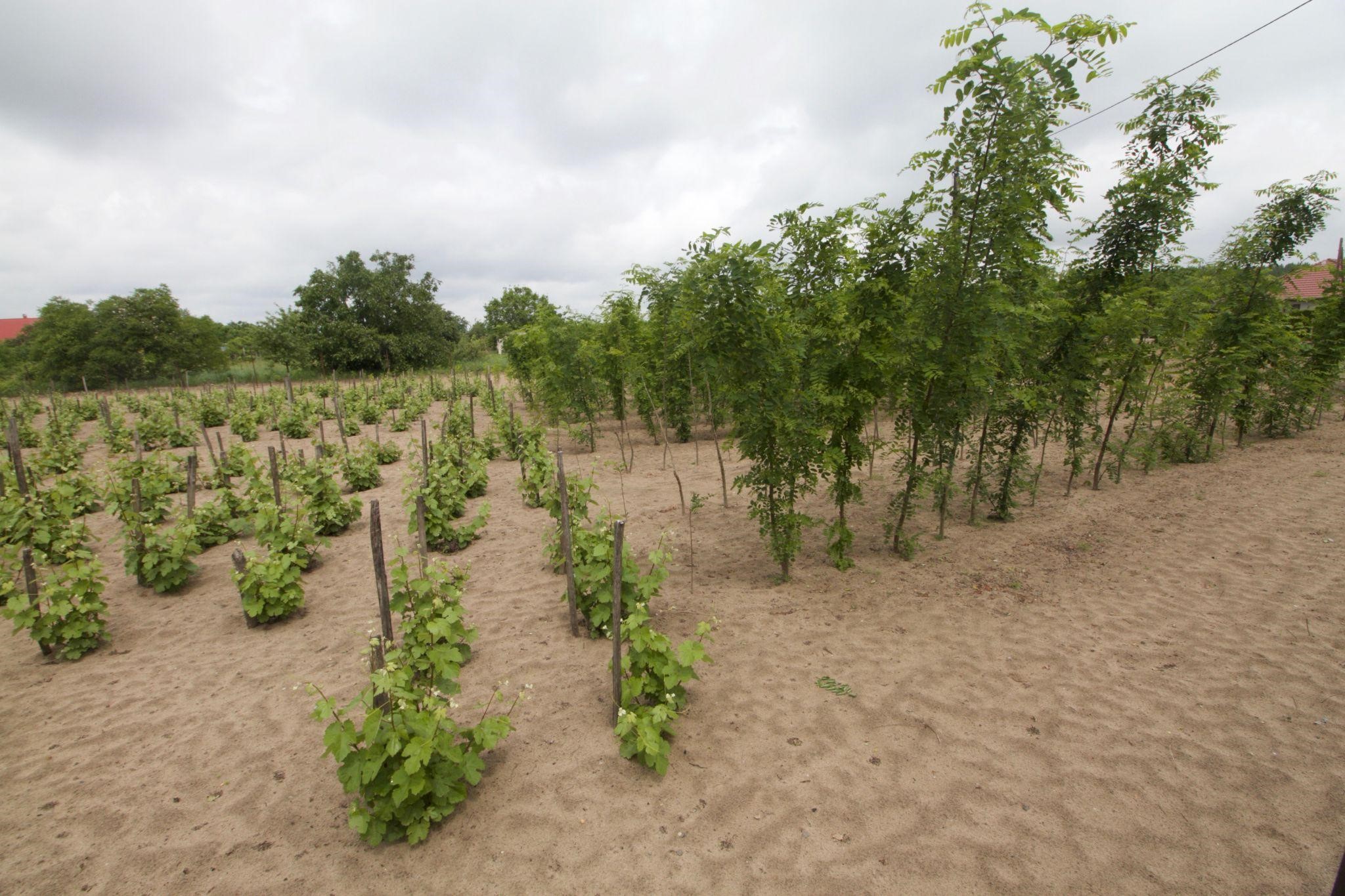 Figure 4. The average salary in Hungary is $20,000 per year, though the minimum-wage salary amounts to around $5,000, which “only ensures that you don’t freeze to death.” Consequently, it makes more sense to engage in the non-monetary economy, providing for more of one’s own needs. Pictured are grapes and home-scale locust fuelwood, both common on small Hungarian farmsteads along with cherries, potatoes, elderberries, and small livestock.
Figure 4. The average salary in Hungary is $20,000 per year, though the minimum-wage salary amounts to around $5,000, which “only ensures that you don’t freeze to death.” Consequently, it makes more sense to engage in the non-monetary economy, providing for more of one’s own needs. Pictured are grapes and home-scale locust fuelwood, both common on small Hungarian farmsteads along with cherries, potatoes, elderberries, and small livestock.
There is an opportunity to increase the quality of the locust trees grown in Hungary and the United States. Standard management protocol in Hungary involves planting at tight spacing, and then thinning for posts and firewood. Form-pruning timber trees upgrades a tree that would otherwise be firewood, into wood that’s less likely to move, i.e. become distorted after being sawn: to bow, kink, twist, cup, or crook. This brings us to a discussion of black locust in agroforestry systems.
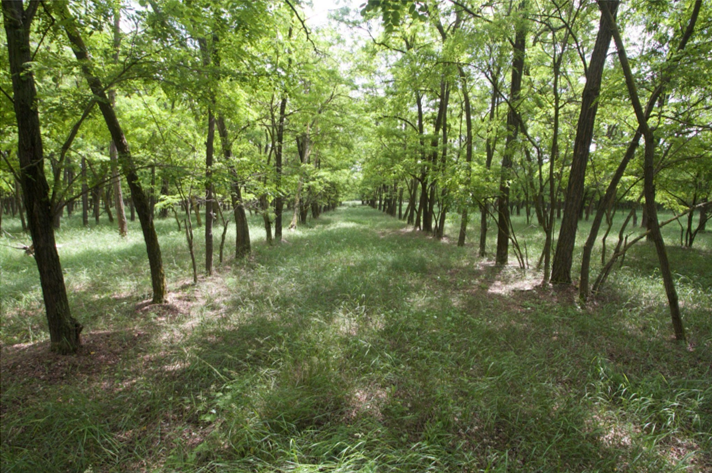 Figure 5. Not all trees are destined to be sawlogs. Pictured: tight spacing and insufficient pruning have greatly reduced the value of this plantation.
Figure 5. Not all trees are destined to be sawlogs. Pictured: tight spacing and insufficient pruning have greatly reduced the value of this plantation.
Trees in agroforestry systems are planted with the explicit purpose of obtaining an economic yield, while creating ecosystem services. Locust grows at 3x the rate of walnut, and yields roughly the same value per tree. Gabor Erdélyi cites locust as an intergenerational store of wealth. You plant walnut for the great grandkids, and locust for your own children. And since it re-sprouts after being cut down, each generation gets a cash yield. Quality of the wood is paramount. Form pruning is imperative for positive financial returns, and Zach of Robi Decking stresses the value of straight, clear sawlogs.
 Figure 6. Deciduous trees are a 130m-year-old technology that pulls carbon from the atmosphere, having created value for humans for tens of thousands of years.
Figure 6. Deciduous trees are a 130m-year-old technology that pulls carbon from the atmosphere, having created value for humans for tens of thousands of years.
Over 200 years of locust cultivation in wood-scarce Europe show us that planning is essential. The Hungarians know what they’re doing, and have pioneered the space. Takeaways include the need to form-prune trees, and quarter-saw as much as possible. In the United States, Robi Decking is actively buying locust logs in nearly all cold, humid regions. The tree is regenerative while it grows, and sustainable after it’s cut down: 1 acre of plantation (181 trees per acre) will draw down 339 tons of carbon dioxide over 30 years (about 1 million miles worth of driving a car), and the lumber lasts for over 50 years in contact with the soil. If marketing is about telling a story, then the text under the title of this film is not “Based on a true story,” but rather: “All of this is real.”
Harry Greene is the co-founder and CIO of Propagate Ventures, an agroforestry analytics and project development company. If you’d like to learn more about what black locust agroforestry could look like on your farm, please visit overyield.com. Cornell Cooperative Extension forester Brett Chedzoy is an additional resource on black locust.

